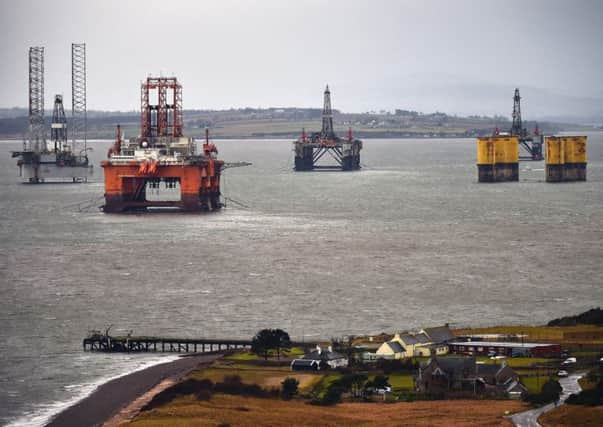This is how long North Sea oil industry has got left – Dr Richard Dixon


Today BP are holding their annual general meeting in Aberdeen. Presumably they think they might be safer from protestors in the home of the UK oil and gas industry, but there will still be tricky questions from shareholders about climate change and the impacts of their activities around the world, including from our sister organisation FoE Mozambique.
Last week we published a report on the climate change imperative to phase out oil and gas extraction through a just transition for workers and communities.
Advertisement
Hide AdAdvertisement
Hide AdThe ‘Sea Change’ report, created with two other organisations, highlights the contradiction of saying that we are serious about climate change and yet aiming to get every last drop of fossil fuels out of the North Sea. It also looks at the huge potential for alternative jobs in renewable energy and energy efficiency, and the measures the UK and Scottish governments need to take to make this transition real and fair, and make sure those jobs are created in Scotland.
In the UK, 91 per cent of our emissions come from burning oil and gas. The already committed extraction of nearly six billion barrels is enough to blow the UK’s climate budget under the 2015 Paris Agreement, yet industry expects to take out at least 20 billion barrels and both governments support pumping out every last drop. The report’s top recommendations are therefore common sense: stop looking for new reserves and cancel licences for fields where extraction has not begun.
The next recommendation is for the governments to work with industry, trade unions, workers and communities to plan a phase-out of extraction and a transformation of the offshore industry. But when should we turn off the valves and plug up the wells?
Three years ago, a very important study was published in the scientific journal Nature by academics from University College London. There had already been discussion of the need to leave about 80 per cent of known fossil fuels in the ground to avoid breaking disastrous climate change temperature limits but this new study looked in detail at the how much of the coal, gas and oil we know about has to stay where it is. They said 80 per cent of coal, 50 per cent of gas and 35 per cent of oil must not be extracted.
Advertisement
Hide AdAdvertisement
Hide AdApplying their calculations to our North Sea gives us a first estimate of how long the industry can be allowed to operate, how long we have to build up alternative industries and jobs and make the transition from high-carbon jobs to low-carbon jobs. Those percentages are of economically recoverable assets, the oil and gas that we have a very good idea we can definitely extract, the so-called 2P reserves.
The industry and both governments talk about there being 20 billion barrels of oil and gas left in the North Sea fields, but the 2P reserves are much smaller than that, at about six billion barrels of oil and gas. There is a bit more oil than gas, but not far off 50:50.
If you apply the UCL study, we should be able to take only 3.4 billion out if we are to play our fair part in the global picture. That is less than is already expected in currently active fields and, at current productions rates, gives between ten and 15 years’ more extraction.
If we are serious about the Climate Emergency, then these are the timescales we should be discussing. And that means we need to start negotiating a Just Transition right now.
Dr Richard Dixon is director of Friends of the Earth Scotland
